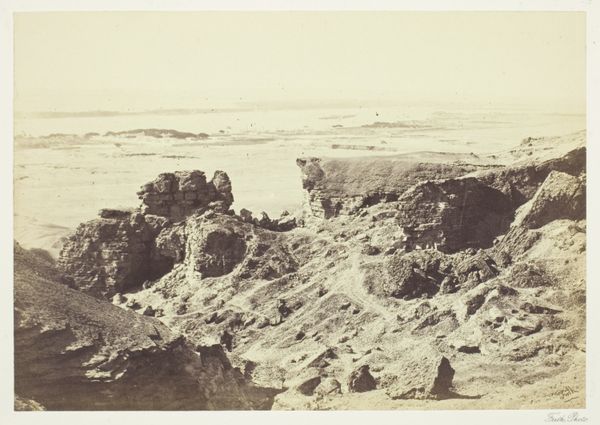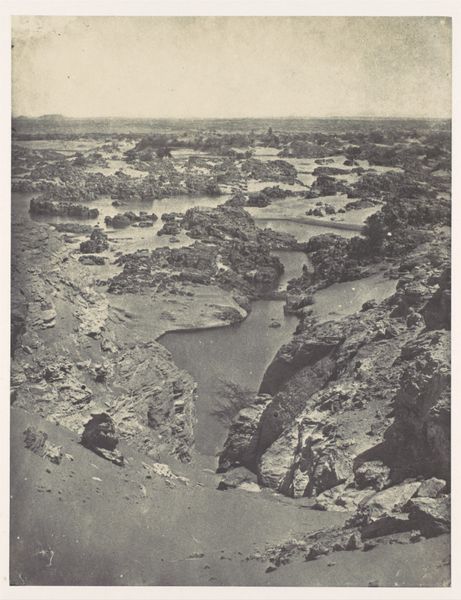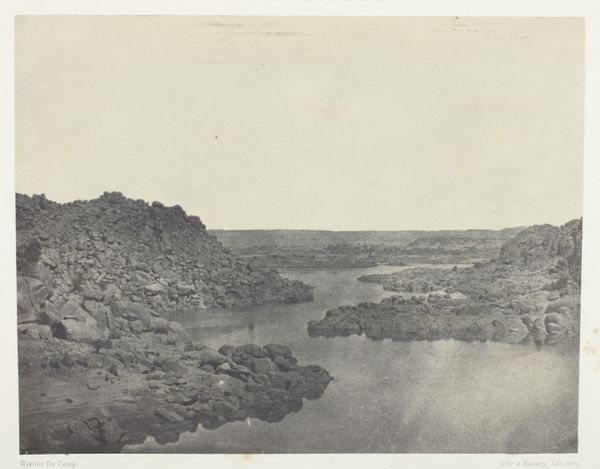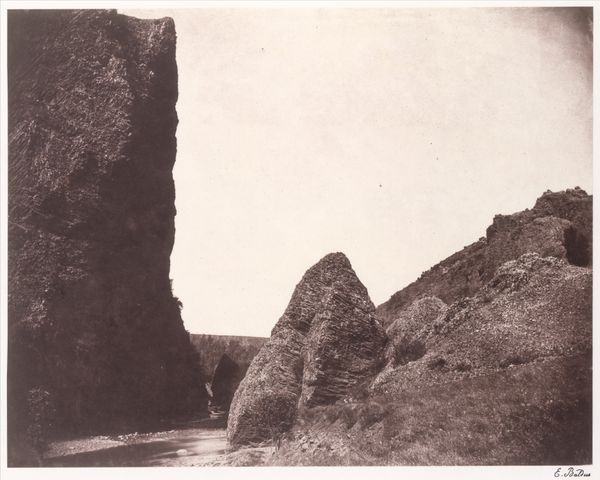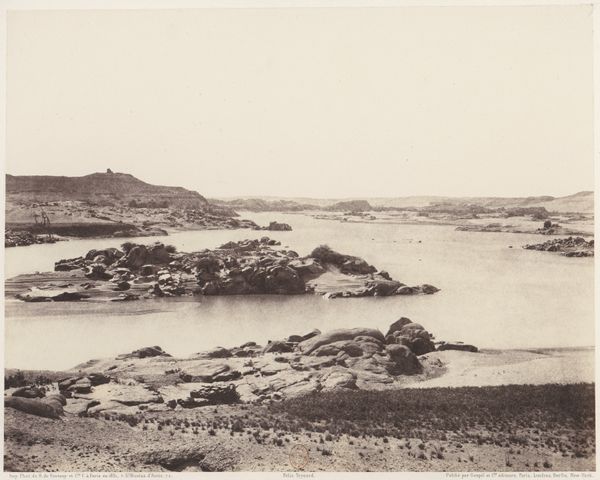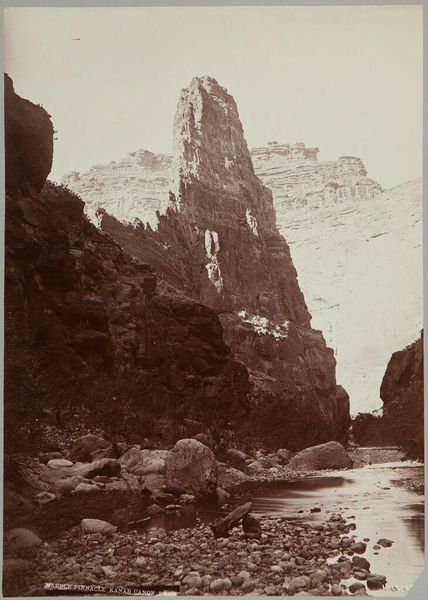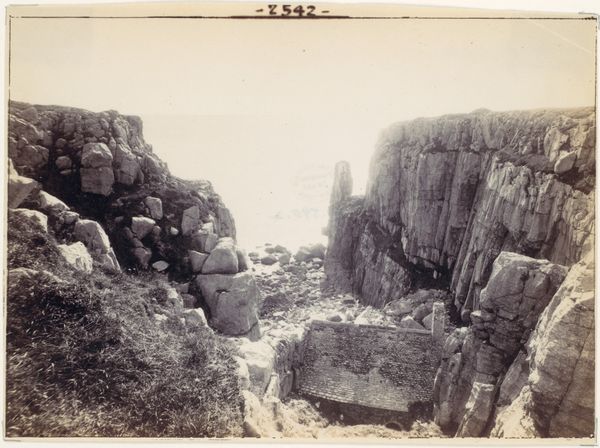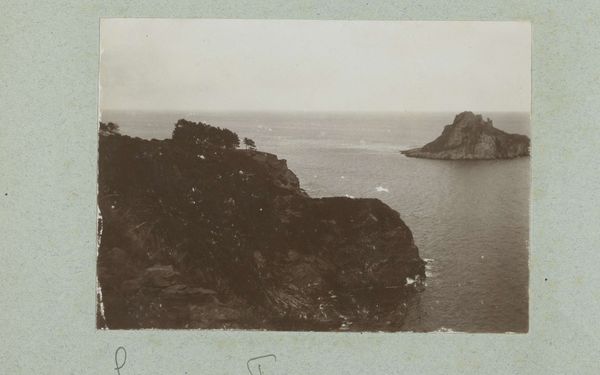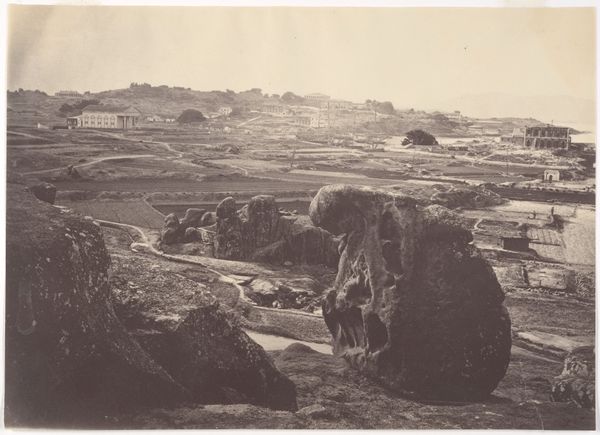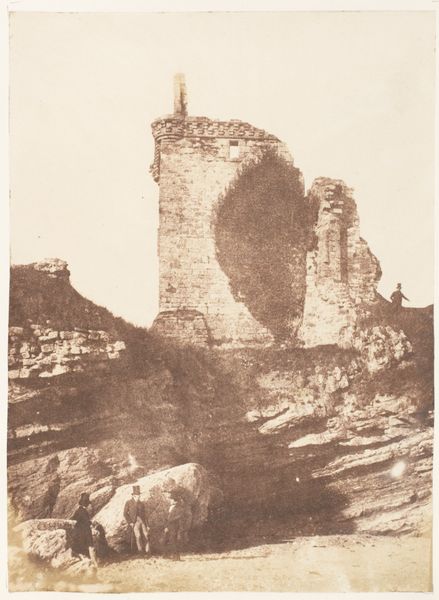
Deuxième Cataracte, Rocher d'Abouçir, Rapides et Ilots Granitiques 1851
0:00
0:00
daguerreotype, photography, gelatin-silver-print
#
landscape
#
daguerreotype
#
photography
#
ancient-mediterranean
#
orientalism
#
gelatin-silver-print
#
realism
Dimensions: Image: 24.9 x 30.7 cm (9 13/16 x 12 1/16 in.) Mount: 39.9 x 51.9 cm (15 11/16 x 20 7/16 in.)
Copyright: Public Domain
Félix Teynard made this photograph of the Second Cataract of the Nile, in Egypt, using the calotype process. Taken in the 1850s, the image is both an aesthetic composition and a document of a place then becoming increasingly accessible to Europeans. Egypt, in this period, was undergoing modernization, with new infrastructure projects, and of course, a growing tourist industry. How did this environment shape Teynard's vision? The photograph reflects an attitude of scientific observation, combined with the picturesque sensibility then fashionable among European travelers. The rocky landscape is carefully framed, emphasizing its geological features. At the same time, we might ask, what perspectives are excluded? Whose stories remain untold in this image of a landscape being opened up to external gazes and interventions? By exploring travel accounts, colonial archives, and the history of photography, we can better understand the complex historical forces that shaped both the landscape and its representation.
Comments
No comments
Be the first to comment and join the conversation on the ultimate creative platform.

